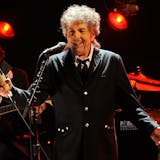When Ethan Nordean, the "sergeant of arms" for the Seattle Proud Boys, led a mob of his fellow far-right nationalists on a winding march to the Capitol last month, an angry crowd had already gathered at the barricades, facing off against a small detachment of the Capitol Police.
It was then, court papers say, that Nordean had a brief exchange with a young man in the throng wearing goggles, a battle helmet and head-to-toe military garb. Within an hour, court papers say, that man, Robert Gieswein, was among the first wave of violent rioters to break into the Capitol, breaching the building through a window shattered by a Proud Boy from New York.
In a flurry of court papers filed in recent days — in four separate cases against six Proud Boys — federal officials have painted scenes like this, assembling the first draft of a narrative that suggests the Proud Boys brought some coordination to the Capitol attack. While prosecutors have not issued an overarching indictment accusing the group of a detailed conspiracy to storm the halls of Congress, they have left hints in the record that they believe a measure of planning went into disrupting the certification of the presidential vote.
In a criminal complaint released Wednesday night, for instance, prosecutors said that days before the Capitol attack, Nordean issued a call on social media asking for donations of "protective gear" and declared during his podcast, "We are in a war."
In previous filings, the government has said that some group members went to the Capitol with communication equipment and that leaders ordered subordinates to show up undercover, not in their typical black-and-yellow shirts.
The Proud Boys, who have long been some of former President Donald Trump's most vocal and violent supporters, have been a chief focus of the FBI's inquiry into the Capitol assault — not the least because they were one of the extremist groups with a large and visible presence in Washington on Jan. 6. In the past few weeks, nearly a dozen people with links to the group have been charged in connection with the riot that caused five deaths and injuries to nearly 140 police officers. But according to the evidence released so far in court files, only about half that number appear to have worked together during the attack.
On Wednesday, the Proud Boys came under increased pressure as the Canadian government moved to formally designate them as a terrorist organization, a step that could lead to financial seizures and allow the police to treat any crime committed by members as terrorist activity. After initially disavowing the violence at the Capitol, the chairman of the group, Enrique Tarrio, has largely gone silent, chased off the public stage by revelations that he had once cooperated secretly with the police and FBI.
Lawyers for some of the Proud Boys facing charges denied that their clients had conspired to storm the Capitol. One of the group's leaders, Joseph Biggs, who was arrested late last month, declined to comment when reached by phone Tuesday. In an interview on the day of the attack, Biggs, who helped Nordean lead the Proud Boy march on Capitol Hill, said that the attack had not been planned but "literally happened in seconds."



